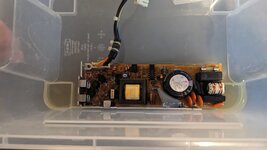I would not at all say that only vintage computer fans are using ancient technology - not at all actually. Hifi nerds are much more common, and some of the 70-80’s stuff is built with incredibly crappy stuff, there once was a “computer grade” quality of caps after all. Let’s not even delve in tube audio. But ancient technology comes up in the most surprising places (for the layman), such as electronics labs, in the forms of analog and even digital meters of all kinds, frequency meters, DMMs, etc - some of which are incredibly accurate and extremely popular, even for today standards, look at the HP 34401A, it’s late 80s technology, and it’s a 6.5 digit DMM…
what is interesting is that many of these meters, even the ones from the 70s, rarely need their electrolytic caps to be replaced. I had an HP frequency meter that was built in 1983 that had better performing caps (in a quite expensive LCR meter) that the ones I bought to replace them.

